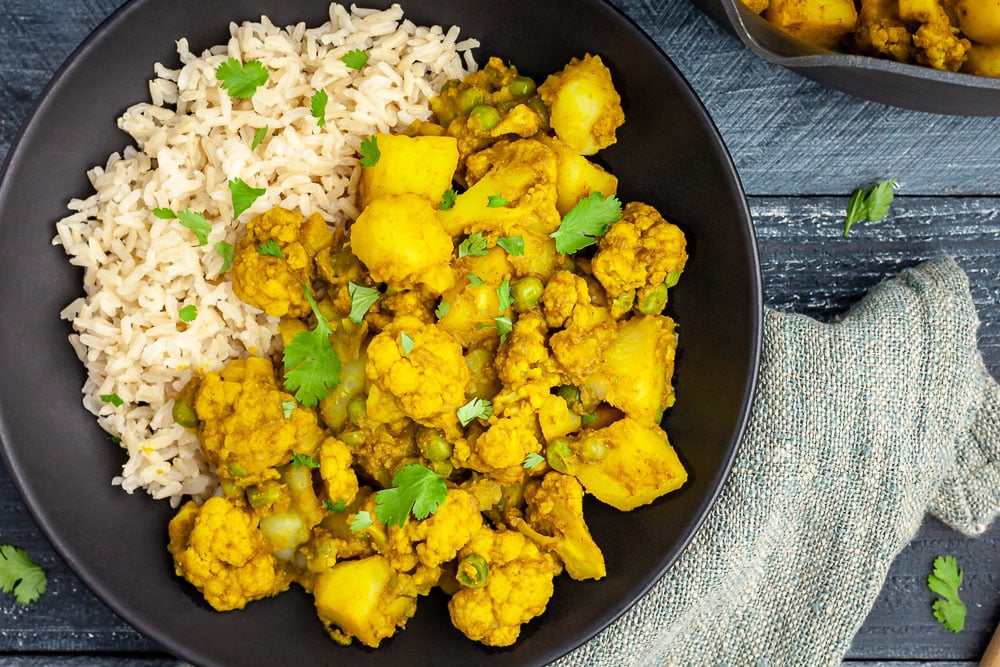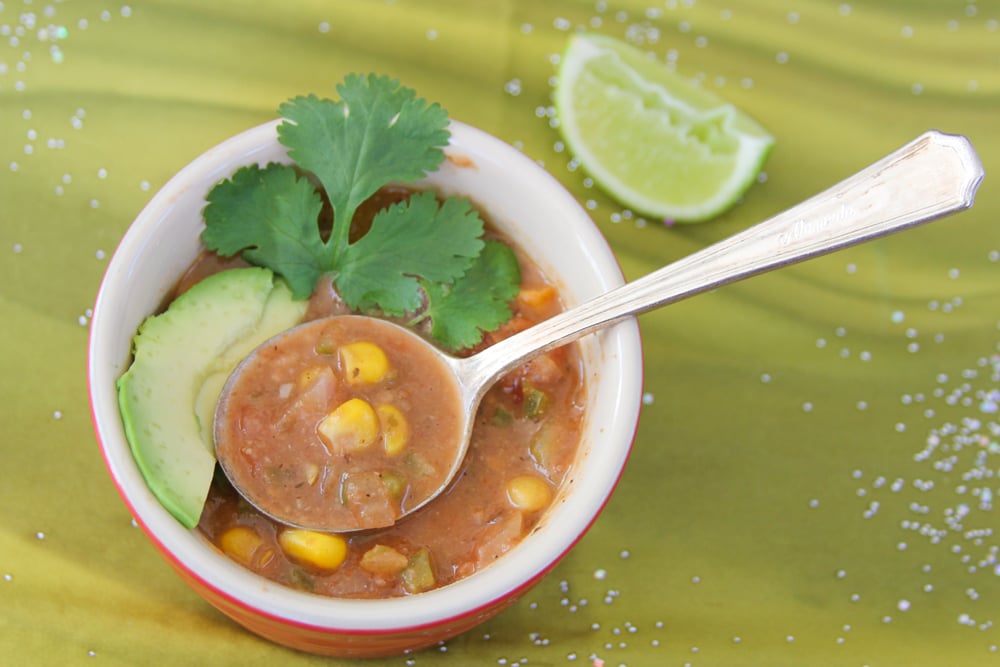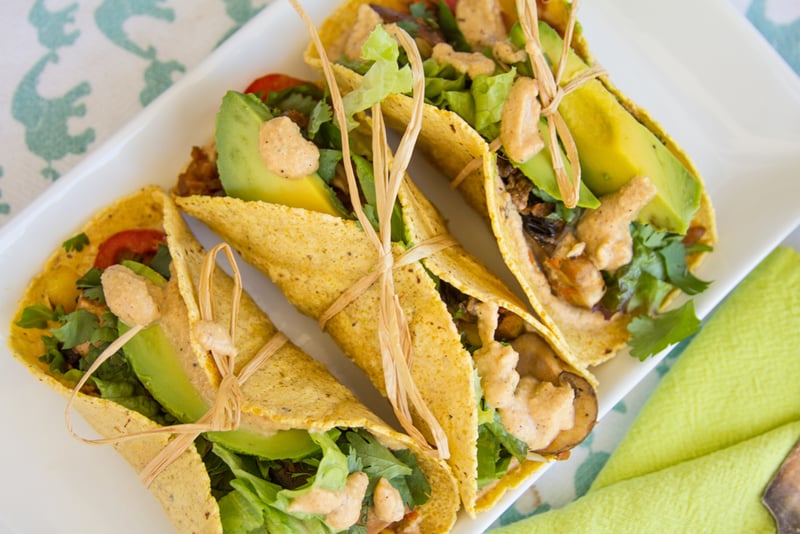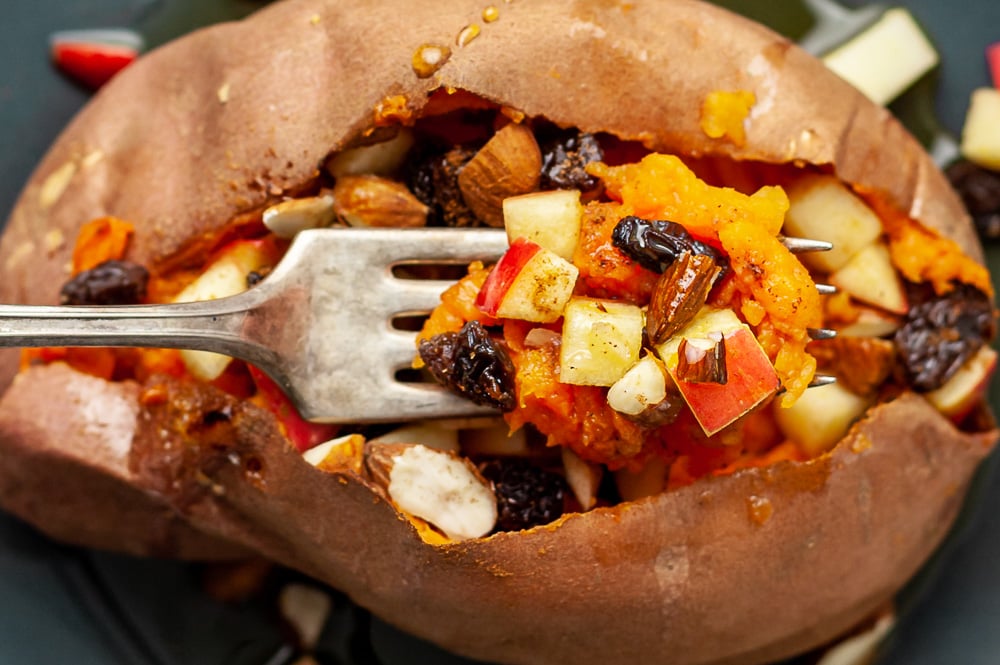By Team Dirty
Oct 18, 2023,
By Team Dirty
Oct 18, 2023,
When most Americans think of curry, we think of India. However, what we know as curry has been common and beloved in many other countries and regions for centuries, typically due to long trade histories. In fact, many peoples and countries across Africa boast hugely varied and expansive curry traditions. In some cases, they’ve been using and loving Asian and Middle Eastern spices for millennia.
You may be surprised to learn the word “curry” doesn’t exist in any Indian language. The word that sounds closest to it, which likely inspired the term, means gravy or sauce, and doesn’t refer to any particular spice blend or flavor. The more you know!
We’ve embraced one of these traditions with our Kilimanjaro Coconut Curry, our take on Tanzanian mchicha, or spinach and peanut curry. This dish is often served on the side with other East African staples, but we’ve added our own spin and made it the main attraction. The surprisingly intoxicating blend of tomatoes, peanuts, and velvety coconut milk creates a luscious sauce for filling veggies and warm spices. We’ve swapped out the spinach for hearty lacinato kale and added chickpeas for extra nutrition and flavor. Serve over rice or your favorite grain for a delicious, crowd-pleasing meal.

What’s inside
Curry powder: In the US, curry typically refers to a blend of spices that commonly include coriander, cumin, ginger, turmeric, and cayenne pepper. There are many varieties available online and in specialty shops that vary in flavor profile and spice level. You can also make your own.
Other spices: In addition to the curry powder, a mix of other spices adds warmth, depth, and interest to every bite.
Sweet potato: This mildly sweet tuber is native to the Americas, but has grown in popularity across Africa and features in many modern East African dishes.
Fresh garlic and ginger: These two are a match made in heaven, with one providing a mellow depth of flavor and the other giving our dish a bright zing that complements the depth. Perfection.

Coconut milk: One of the richest plant milks you can buy, coconut milk is an excellent minimally processed fat source, giving our curry a silky and satisfying texture. Be sure to use unsweetened coconut milk from a can, not a carton, and don’t bother with lite or reduced-fat varieties.
Canned diced tomatoes: The rich umami and acidity of the tomatoes help create the base of our rich sauce. We like canned diced tomatoes, in particular, because of their juice. You can use canned whole, crushed, or pureed tomatoes instead, but don’t try to use fresh. It won’t work.
Peanut butter: If you’ve never had peanut stew, this may seem like a weird addition, but trust us. It adds rich creaminess and toasty nuttiness you’re going to love. Don’t be nervous about the texture, either, it melts into the sauce beautifully. If you or a loved one has an allergy, you can substitute with another nut or seed butter (we like cashew or sunflower butter), but don’t skip it entirely.
Lacinato kale: AKA dinosaur kale. Feel free to sub another leafy green like curly kale or spinach.
How to make Kilimanjaro Coconut Curry
First, prep all your veggies and measure your spices into a small bowl. Set aside for now.

Grab a stockpot or Dutch oven and get it warming over medium heat for a few minutes. Once it’s hot, add the zucchini, sweet potatoes, bell peppers, onions, carrots, garlic, and ginger. Allow to soften for about 5 minutes, stirring occasionally. You can add a small splash of water and stir if things start to stick (1-2 tablespoons).

Dump in the spices you set aside earlier and stir continuously to coat for 1 minute—don’t worry if the spices start to stick to the pot. Everything should be smelling ahh-mazing around this time. Deglaze the pot by pouring in the water and stirring, scraping up all the bits stuck to the bottom. Those stuck bits are full of flavor, and we want every drop.

Now add your garbanzo beans, coconut milk, tomatoes (including the juice), and peanut butter. Stir until the peanut butter dissolves, then bring just to a boil. You may need to raise the heat a bit, but don’t go too high. As the liquid starts to really bubble, lower the heat to a simmer and place a lid on the pot at an angle so some steam can escape.

Allow to simmer, stirring occasionally, for about 20 minutes.
Remove the lid and add the kale. Stir to combine and continue to simmer the curry without a lid until all the veggies can be pierced easily with a fork, about 5–10 more minutes.

That’s it! Your Kilimanjaro Coconut Curry is ready to delight your taste buds. Dish it out and enjoy or check below for our favorite serving suggestions.

Ingredients
Spices
- 2¼ teaspoons curry powder (adjust depending on curry spice level and whether you like spicy)
- 1¼ teaspoons cumin powder
- 1 teaspoon salt
- ½ teaspoon cinnamon powder
- ½ teaspoon smoked paprika powder
- ½ teaspoon coriander powder
- ¼ teaspoon turmeric powder
- ¼ teaspoon cardamom powder
- ¼ teaspoon black pepper (about 10 turns)
- ⅛ teaspoon clove powder
- ⅛ teaspoon cayenne powder (use less or omit if you don't like spicy)
Everything else
- 2 cups zucchini, unpeeled and cut into ½-inch cubes (250 g)
- 1½ cups sweet potato, peeled or unpeeled and cut into ½-inch cubes (195 g)
- 1 cup red bell pepper, diced (150 g)
- 1 cup yellow onion, diced (160 g)
- ½ cup carrot, sliced (65 g)
- 1 tablespoon garlic, minced (8 g)
- 1 teaspoon fresh ginger, peeled and minced
- 1 cup water (240 ml)
- 1½ cups canned garbanzo beans (chickpeas), drained and rinsed (225 g)
- 1½ cups coconut milk (330 g / from a can)
- 1½ cups canned diced tomatoes, undrained (365 g)
- ¼ cup peanut butter (65 g)
- 2 cups lacinato kale, finely chopped (70 g / AKA dinosaur kale)
- cooked brown rice (optional) (for serving, see Notes for link)
Instructions
- Stir all of the spices together in a small bowl and set aside for now.
- Heat a stockpot or Dutch oven over medium heat for 2 minutes. Add the zucchini, sweet potatoes, bell peppers, onions, carrots, garlic, and ginger. Cook for 5 minutes, stirring occasionally and adding a small splash of water if things begin to stick.
- Add the spice mixture you set aside earlier and cook for 1 minute, stirring constantly, until the spices smell heavenly. Add the water and stir up the stuck bits from the bottom of the pot.
- Add the garbanzo beans, coconut milk, tomatoes (including the juice), and peanut butter and stir until the peanut butter dissolves. Bring just to a boil, then lower heat to a simmer. Place a lid on the pot at an angle and simmer for 20 minutes, stirring occasionally and making sure to stir the bottom of the pot to keep things from sticking.
- Remove the lid, add the kale, and simmer an additional 5-10 minutes, without a lid, until the veggies are tender.
- Dish out and serve alone or over the cooked grain of your choice. We like brown rice. Enjoy!
Notes

Serving and storing
This recipe makes about 8 cups of Kilimanjaro Coconut Curry, enough for 3–4 servings if eaten on its own—more when served over cooked brown rice or another grain. Feeling extra fancy? Toast up some peanuts to sprinkle on top. Yum!
If you’re lucky enough to have leftovers (not likely, but never say never), store in an airtight container in the fridge for up to five days.
After you’ve eaten your fill and fallen head over heels in love with that rich peanutty flavor, pop over to try our West African-Inspired Peanut Stew. We know you’ll love both. And if you’re a Clean Food Dirty Girl member, you can save or love this recipe so it’s always easy to find.
Let us know if this is a new favorite in the comments below.

Here’s to eating all the curry!
Xo
Team Dirty

More plant based curry recipes you’ll love
Love the food that loves you back
Get instant access to thousands of plant-based recipes and meal plans, no credit card or perfection required.













